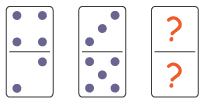Dreadful Division
Many students struggle with division and especially long division. How can we make division Easier?
 The absolute key to mastering division is multiplication and when students know their times tables better, they feel much more confident doing division exercises. It all comes down to practice, practice and practice. Remedial math materials can facilitate in mastering these multiplication skills and give young learners confidence.
The absolute key to mastering division is multiplication and when students know their times tables better, they feel much more confident doing division exercises. It all comes down to practice, practice and practice. Remedial math materials can facilitate in mastering these multiplication skills and give young learners confidence.Once students feel comfortable in multiplication, division becomes actually very easy. Long division is not a number concept; it's a structure, a framework, in which relatively easy multiplication and subtraction takes place.
By doing a lot of math puzzles and word searches, children will learn division automatically. Just print them out!The most anticipated question for teacher is of course: 'How to teach division?.We can come up with 7 steps, but there undoubtedly more.
1. Teach the concepts of grouping and sharing of the easier times tables.
Begin with the concept of grouping by using multiples of 2 and 3 and then let students figure out how to share groups of candies by 2 or 3 children. It is important to use word problems rather than multiplication tables as introduction to division and multiplication.
2. Teach the multiplication and division facts of the easier times tables.
After using the tables of 2 and 3 (and 5 or 10) in word problems, students will understand the processes of grouping and sharing. When we introduce the 'raw' corresponding tables, students will have no problem memorizing these basic math facts.
3. Priming.
Don't teach the multiplication and division tables all at once. Give students some time to understand the tables and then let the topic rest for a while. Research shows that by priming and reviewing learning materials students will be better able to retrieve the information.
4. Introduce the other multiplication tables and division
Multiplying and dividing are like day and night, like heavy and light, they are opposites and should be taught at the same time. Students need to learn to go back and forwards between groups and shares. Teach all tables and create materials that can facilitate students in memorizing the math facts. This step is crucial in the child's math development and will affect the future math performances.
5. Introduce remainders.
Mostly in the third grade, students will learn how to divide numbers and have a remainder, an undividable left over. Choose very easy examples such as 9 divided by 2. Let the students feel comfortable first, before introducing larger numbers.
6. The feared long division
Focus on the process rather than on the numbers here! Long division is difficult. Teach students how to work accurately and neatly. Use the advantage of preprinted notebooks. Line up the hundreds, tens and ones. Most students will not understand the concept at first, it probably will look like acacadabra. Group students, let those who understand help you and let them teach those who don't understand. Use the STAD teaching methods and form competitive groups with the 'swim all or drown all' principles. As a last resort, teachers will have to ask the parents for help (if possible of course). It is in our opinion possible for each!! child to learn long division.
7. Re-teach step 1 to 7 where necessary
In case a student struggles with division and multiplication, it is wise to go back to step 1. Print lower grade math materials and ask cooperation of the parents! Repetition will work eventually! Don't give up on your students when it comes to multiplication and division, it will mark them for life!>
Contact us at: contact@mathinenglish.com




